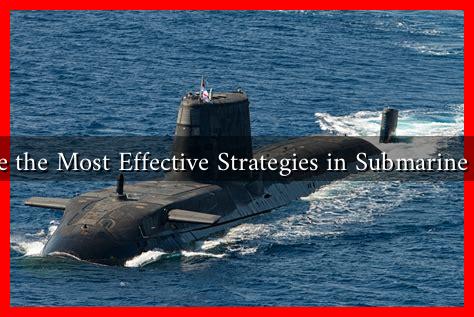-
Table of Contents
What Are the Most Effective Strategies in Submarine Training
Submarine training is a critical component of naval operations, ensuring that crews are prepared for the unique challenges of underwater warfare. The complexity of operating a submarine requires specialized skills, teamwork, and a deep understanding of both technology and tactics. This article explores the most effective strategies in submarine training, highlighting key methodologies, technologies, and real-world applications.
The Importance of Realistic Simulations
One of the most effective strategies in submarine training is the use of realistic simulations. Simulators allow crews to experience various scenarios without the risks associated with actual underwater operations. These simulations can replicate everything from navigation challenges to combat situations.
- Advanced Technology: Modern simulators utilize virtual reality (VR) and augmented reality (AR) to create immersive environments.
. For example, the U.S. Navy employs the Submarine Command Team Trainer (SCTT), which provides a realistic command and control environment.
- Scenario-Based Training: Training scenarios can be tailored to reflect current geopolitical situations, allowing crews to practice decision-making under pressure. This adaptability is crucial for preparing for real-world missions.
Teamwork and Communication Drills
Effective communication and teamwork are vital in submarine operations, where crew members must work closely together in confined spaces. Training programs emphasize the development of these skills through various drills and exercises.
- Regular Drills: Conducting regular emergency drills helps crews respond quickly and efficiently to crises. For instance, the Royal Navy conducts “crash dive” drills to prepare for sudden threats.
- Team-Building Exercises: Activities designed to enhance trust and collaboration among crew members are essential. These can include problem-solving tasks that require input from all team members.
Continuous Assessment and Feedback
Continuous assessment and feedback are crucial for improving performance in submarine training. This strategy involves evaluating crew members’ skills and providing constructive feedback to enhance their capabilities.
- Performance Metrics: Training programs often use specific metrics to assess individual and team performance. For example, the U.S. Navy tracks metrics such as response times and decision-making accuracy during simulations.
- After-Action Reviews: Conducting debriefings after training exercises allows crews to discuss what went well and what could be improved. This reflective practice fosters a culture of continuous learning.
Integration of Technology in Training
The integration of technology into submarine training has revolutionized how crews prepare for missions. From advanced sonar systems to automated navigation tools, technology plays a pivotal role in modern training methodologies.
- Use of Artificial Intelligence: AI can analyze training data to identify areas for improvement, allowing for personalized training plans. For instance, the U.S. Navy is exploring AI-driven systems to enhance decision-making processes.
- Virtual Training Environments: Virtual environments enable crews to practice in a safe setting, reducing the risks associated with live training. The U.S. Navy’s Virtual Reality Submarine Training (VRST) program exemplifies this approach.
Case Studies: Successful Training Programs
Several navies around the world have implemented successful submarine training programs that serve as models for others. These case studies highlight effective strategies and their outcomes.
- U.S. Navy: The U.S. Navy’s Submarine Force has developed a comprehensive training pipeline that includes classroom instruction, simulator training, and at-sea exercises. This multi-faceted approach has resulted in high operational readiness rates.
- Royal Australian Navy: The Royal Australian Navy has adopted a “train as you fight” philosophy, ensuring that training closely mirrors real-world conditions. This strategy has improved crew performance during joint exercises with allied forces.
Conclusion
Submarine training is a complex but essential aspect of naval operations, requiring a blend of realistic simulations, teamwork, continuous assessment, and technological integration. By employing these effective strategies, navies can ensure that their crews are well-prepared for the challenges of underwater warfare. As technology continues to evolve, so too will the methods of training, making it imperative for naval forces to adapt and innovate continually.
In summary, the most effective strategies in submarine training include:
- Utilizing realistic simulations for immersive training experiences.
- Emphasizing teamwork and communication through drills and exercises.
- Implementing continuous assessment and feedback mechanisms.
- Integrating advanced technology to enhance training effectiveness.
- Learning from successful case studies to refine training programs.
For further reading on submarine training methodologies, you can explore resources from the U.S. Navy and other naval institutions.





